The Past, Present and Future of the West’s Water Woes
Western states are getting hotter and drier each year, with little to no water to support agricultural operations. How did we get here, and where do we go?
The Past, Present and Future of the West’s Water Woes
Western states are getting hotter and drier each year, with little to no water to support agricultural operations. How did we get here, and where do we go?
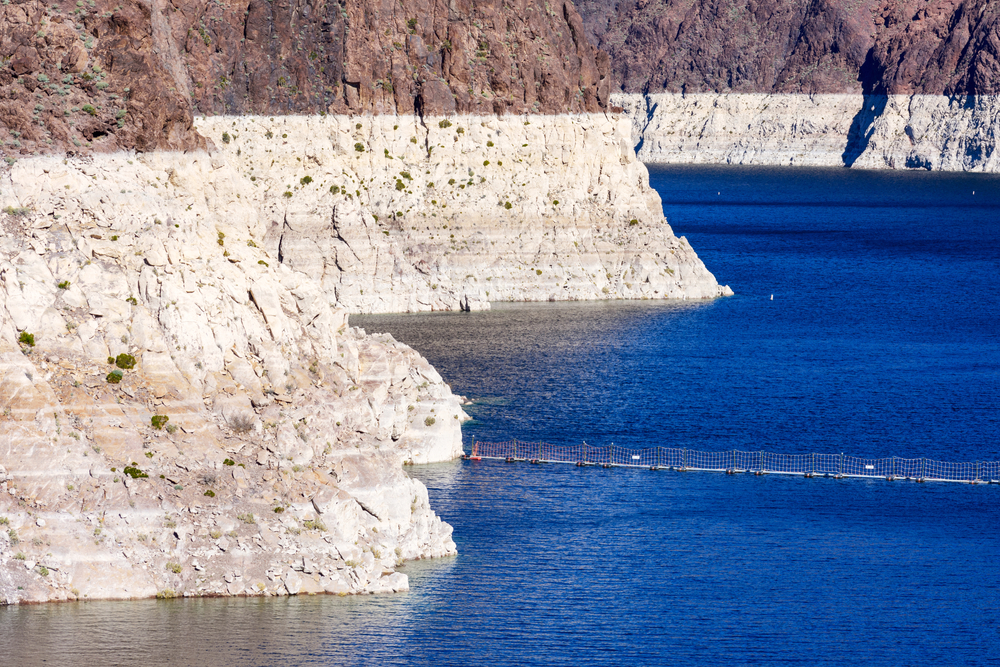
Lake Mead, the largest reservoir in the US, reaches record low levels amid ongoing drought in the American West.by Michael Vi, Shutterstock.
On June 1, the Metropolitan Water District of Southern California began implementing an extreme set of water restrictions on some of the most populous counties in the entire country, including Los Angeles County. This policy, which allows for only two days of outdoor watering per week, among other rules, is in response to the continued drought that’s plaguing the entire American West.
This particular policy will have an exceedingly small effect on the overall water situation in the West, and in the Southwest in particular. To know why, and to know what might actually work, we have to know how we got to this point.
A Brief History of Water in the West
In the early- to mid-19th century, much of the American West, from the Mississippi River to the Rocky Mountains, was referred to as the Great American Desert. This was a little bit derisive, from the Easterners, but large swathes of the American West are either literal desert (both hot and cold: “Desert” refers to precipitation, not temperature), semi-desert or simply very arid.
Throughout the known history of the American Southwest in particular, there are comparatively few large-scale pre-Columbian settlements, for the very basic reason that this area is not naturally well suited for such. This is not, of course, to say that people didn’t live here; the communities just tended to be smaller and/or nomadic, at least inland. There are exceptions, though.
The coastal peoples of Southern California, including the Tongva and Chumash, were sedentary due in large part to the availability of seafood; they did not practice much or any agriculture, as it was neither necessary nor sensible in the environment. The Hohokam crafted wildly complex irrigation to create a home in what is now Phoenix, Arizona; some of their canals, a thousand years old, were paved with concrete and are still in use today. The Hohokam culture fizzled out and dispersed, probably, just a few decades before Columbus’s arrival, owing (also probably) to climate change that made the Phoenix area incompatible with life. The Ancestral Pueblans, who lived in parts of Colorado, Arizona, New Mexico and Utah, experienced a boom time for their cities, which turned out to be a cycle of wet weather. The climate changed; the Ancestral Puebloan people moved to somewhere wetter.
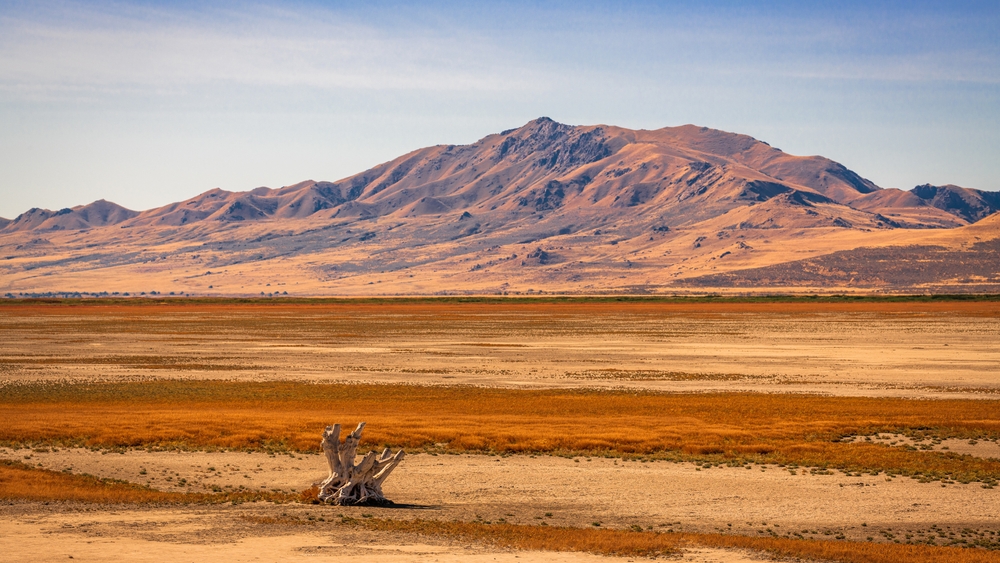
The American West, excepting the Pacific Northwest, has a very bad combination of precipitation factors for sustaining human life. The first is simply that it doesn’t rain very much; Los Angeles receives, averaged over the past 100 years, somewhere just north of 14 inches of rain per year. New York City gets between 40 and 50 inches per year. Phoenix gets less than 10.
The other big problem is that, unlike in the East and Midwest, which have reasonably consistent rain (or snow) regardless of month, the West experiences long periods of absolutely zero rain, followed by a few weeks of rain that can be incredibly intense. So, even those annual precipitation numbers are misleading for, say, agriculture, which needs consistent water. It also means that the West is very prone to extreme floods, as waterways that lie dry for 10 months suddenly get the equivalent of the Mississippi River’s cubic-feet-per-second (CFS) flow all at once.
From Colorado to southern California, Oklahoma to North Dakota, people have always lived in the West. But very rarely have they lived in one dense place without moving around, and the few times that has happened have not ended well.
Westward Migration and Consequential Irrigation
The modern history of the West starts, really, with the Mormons, who were repeatedly kicked westward until they landed in Utah, which no other white people seem to have wanted. The Mormons turned out to be excellent at irrigation, first damming a small stream in what’s now Salt Lake City called City Creek, in 1847. By the turn of the century, the federal government had decided that the West could be tamed and made to provide in ways it never really had before. In 1902, Congress passed the Reclamation Act, which was designed to turn inhospitable and economically ignored parts of the United States into profitable members of the Union. Basically, the idea was that the government would sell lots of land in the West, and use that money to pay for irrigation projects in the West, which would make the West a nicer place to live, which would entice more people to live in the West.
This, along with some historically wet years in the 1880s that caused the deserts to bloom, worked. (There was a popular, despite being quickly debunked, theory called “rain follows the plow” that posited that if you tried farming desert land, it would rain. It was sort of “if you build it, they will come,” but really, really wrong.) Huge populations flowed out of the east, south and midwest into lands formerly thought of as uninhabitable, enticed by cheap land and free water. That’s right, the water would be heavily subsidized by the government, in an effort to better tempt farmers. (We’ll revisit this later.)
Out of the Reclamation Act, the Bureau of Reclamation was formed to do all this irrigation building, and its major weapon was the dam. It dammed everything that could conceivably be dammed and plenty of things that shouldn’t have been. This obviously had untold destructive effects on the environment, but it created economies out of whole cloth. Many of these economies, including farming in the desert, were shortsighted, unsustainable and very expensive.
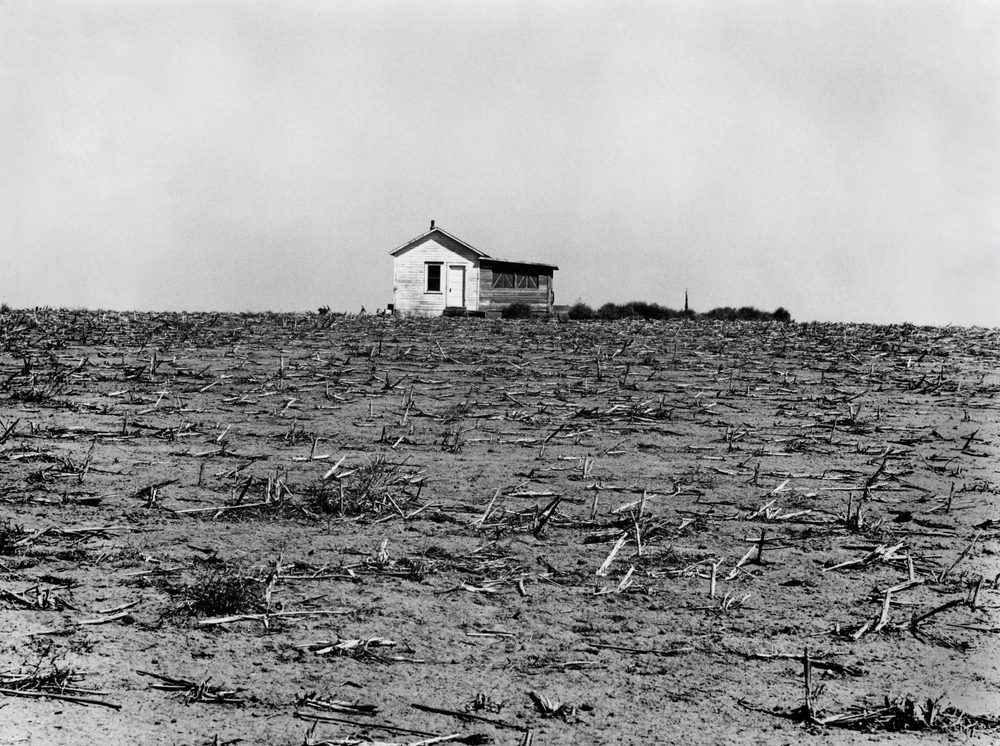
When the Colorado River was dammed repeatedly, the Mountain states demanded that, to approve huge and pricey projects such as the Hoover Dam, they’d need to get water for themselves. So they got water rights, but most of Colorado is too high in elevation, too cold and too dry to make sense for farming. It happened anyway, and Colorado (along with the Dakotas) became major producers of…cotton and alfalfa. There was already a surplus of these crops, so it made no macro-economic sense, and cotton in particular is a very thirsty crop, so it made no geographic sense. But it made micro-economic sense, in that you could move to Colorado, get cheap land and free water to grow whatever you could. To help prop you up, the government would guarantee prices for your crops. On an individual level, great. On any kind of broad scope, pure folly. This led to the Dust Bowl: inexperienced farmers using wild amounts of free imported water on land that couldn’t handle it. Eventually, it turned to dust, and farmers turned further to the West.
Who Has the Right to Water?
In California, the Central Valley was once, as Marc Reisner writes in his seminal book Cadillac Desert, a sort of Serengeti of North America: a massive grassland ecosystem in inland California, seasonal marsh in the north and desert grasslands in the south, home to millions of birds, mountain lions, wolves, bears and more. It has been almost entirely destroyed and is now the most valuable agricultural land in the country.
The Bureau of Reclamation dammed every possible river to move water to southern and inland California. The Central Valley Project arose during the New Deal to move water from Northern California, especially the Sacramento-San Joaquin Delta, to the Central Valley. Farmers and engineers also discovered a massive aquifer underneath the Central Valley, the remnants of an ancient sea. They started to drain it at extraordinary rates, and the aquifer was not refilled, because the water that might have, eventually, refilled it was also being rerouted to farms.
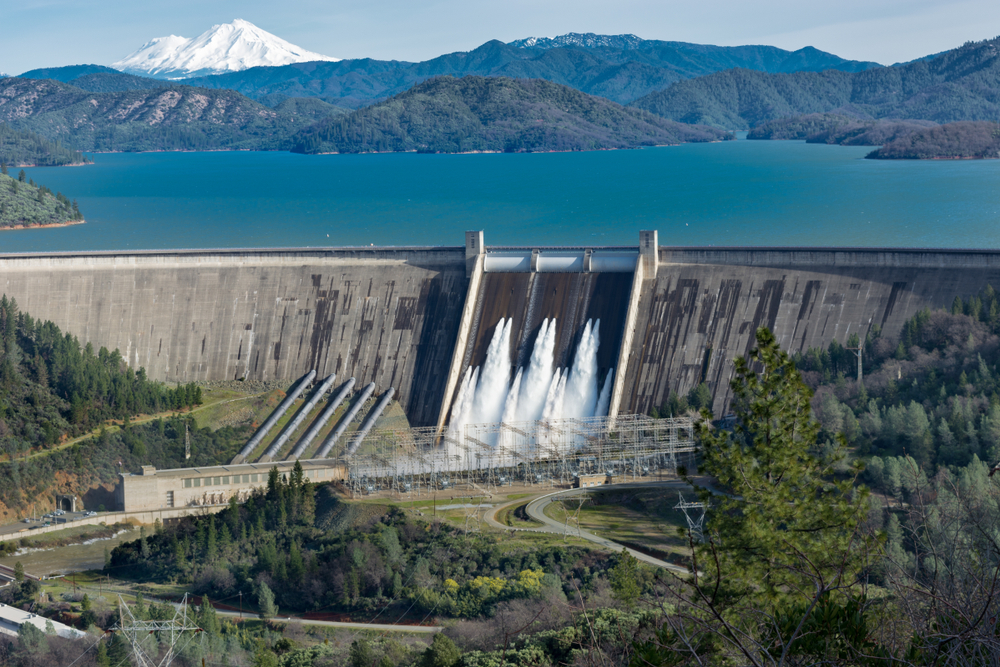
The federal government has also issued gigantic subsidies to farmers in the Central Valley, in the form of incredibly cheap water and in crop subsidies. This has enabled the Central Valley to grow confusing crops for a desert environment, including almonds, citrus, avocados, pistachios and stone fruits, all of which need a lot of water. Farmers never needed to try to work with the landscape; they could overpower it through brute force and lots of federal cash.
Another major issue is the eager sloppiness, and sometimes, illegality, of the water rights systems.
Originally, subsidized water was only supposed to be available to individual holdings of 160 acres, which was believed to be plenty to make a living in California. Farmers quickly blew past that, and enforcement was basically abandoned. That led to mass consolidation, with a prime example being the Westlands Water District, in which a few hundred incredibly rich farmers spend hundreds of thousands of dollars lobbying to receive vast amounts of cheap, imported water to run wildly profitable farms in the desert.
Those in charge of allocating the water also, almost right from the beginning of these projects, have overestimated the amount of water that’s actually available. “The water agencies have promised, sometimes, five times more water than exists in California in contracts and with water rights claims,” says Carolee Krieger, executive director of the California Water Impact Network, or C-WIN, a non-profit advocacy group that fights for the sustainable use of California’s water. “We call this paper water.” Sometimes, a project will pass, with states signing off, based on an estimate that’s way off, or that becomes way off due to the realities of construction. Over-promised water leads those with water rights to take far more than they should, leaving less for everyone else and destroying ecosystems in the process.
California’s Central Valley is the most extreme example, but there are agricultural operations all over the West that arose from the same zeal. Legislators and bureaucrats from, or obsessed with, Western states demanded water rights in order to pass water reclamation projects, and then demanded federal aid to keep the operations running on redirected water viable.
The Central Arizona Project delivers water from the Colorado River to Tucson and Phoenix, and also to farmland in surrounding counties. The Columbia Basin Project delivers water from the Columbia River hundreds of feet over mountains to feed into Grand Coulee Dam, to feed farms in eastern Washington state. There are dozens of these projects, some of which benefited (albeit greatly) just a few farmers.
An Uncertain Future
In Los Angeles, the water restrictions have attracted criticism, and likely will meet with non-compliance. Some of the reasoning for this criticism is absolutely valid. About 80 percent of California’s water is used to irrigate the desert and grow water-intensive crops, while only about 10 percent goes to municipal use. (The remainder is used by industry.) Lawns in Los Angeles are bad for the environment, but they are not the reason why Southern California is running out of water.
The western states have repeatedly and continuously neglected to take action which could allow for the sensible use of water. Los Angeles has truly awful stormwater catchment systems, for example. Billions of gallons of water in Los Angeles County flow into the Pacific Ocean every year, picking up all kinds of pollution on the way. Programs to fix this problem have been proposed, passed, and then lapsed into bureaucratic stasis where nothing actually gets done.
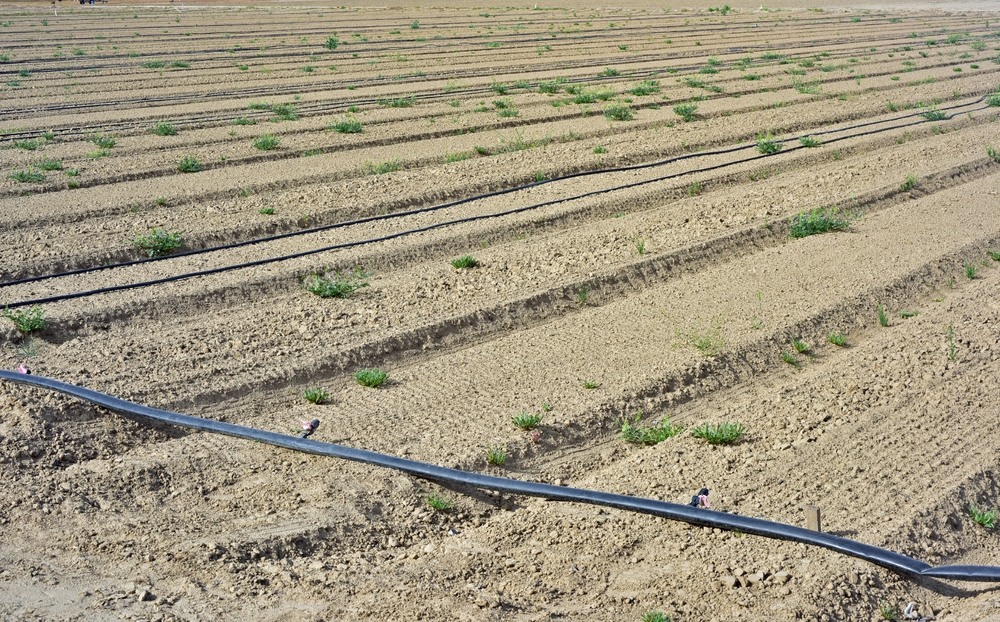
There’s also the not insignificant problem of evaporation. Most of the reservoirs and canals in the West are open-air, due to cost or earthquake issues. But they’re also in the desert. Millions of acre-feet of water (the amount of water needed to cover one acre with one foot of water) evaporate each year.
In essence, how we got to this point is due to a few different key factors. One is climate change; this has happened before, which isn’t to take anything away from its anthropogenic causes or severity this time around. The West is hotter and drier each year. Another is the rampant cash grab of water over the past 10 years: All the available sources of water, be they the Colorado River, the Tulare Aquifer underneath the Central Valley, or the Owens River (which was stolen by Los Angeles, as depicted, a little loosely, in the movie Chinatown), have been dammed, directed and drained beyond all possibility of sustainability. Federal funding provided unlimited cheap water, power, and land, which was and continues to be used recklessly.
I asked Krieger what happens if the Central Valley groundwater, which farmers are now pumping relentlessly to make up for the lack of subsidized water coming from the Colorado River projects, just…dries up. “Well, that’s what we’re all about to find out,” she said. We’re about to find out a lot of things.”
Follow us
This work is licensed under a Creative Commons Attribution-NoDerivatives 4.0 International License.
Want to republish a Modern Farmer story?
We are happy for Modern Farmer stories to be shared, and encourage you to republish our articles for your audience. When doing so, we ask that you follow these guidelines:
Please credit us and our writers
For the author byline, please use “Author Name, Modern Farmer.” At the top of our stories, if on the web, please include this text and link: “This story was originally published by Modern Farmer.”
Please make sure to include a link back to either our home page or the article URL.
At the bottom of the story, please include the following text:
“Modern Farmer is a nonprofit initiative dedicated to raising awareness and catalyzing action at the intersection of food, agriculture, and society. Read more at <link>Modern Farmer</link>.”
Use our widget
We’d like to be able to track our stories, so we ask that if you republish our content, you do so using our widget (located on the left hand side of the article). The HTML code has a built-in tracker that tells us the data and domain where the story was published, as well as view counts.
Check the image requirements
It’s your responsibility to confirm you're licensed to republish images in our articles. Some images, such as those from commercial providers, don't allow their images to be republished without permission or payment. Copyright terms are generally listed in the image caption and attribution. You are welcome to omit our images or substitute with your own. Charts and interactive graphics follow the same rules.
Don’t change too much. Or, ask us first.
Articles must be republished in their entirety. It’s okay to change references to time (“today” to “yesterday”) or location (“Iowa City, IA” to “here”). But please keep everything else the same.
If you feel strongly that a more material edit needs to be made, get in touch with us at [email protected]. We’re happy to discuss it with the original author, but we must have prior approval for changes before publication.
Special cases
Extracts. You may run the first few lines or paragraphs of the article and then say: “Read the full article at Modern Farmer” with a link back to the original article.
Quotes. You may quote authors provided you include a link back to the article URL.
Translations. These require writer approval. To inquire about translation of a Modern Farmer article, contact us at [email protected]
Signed consent / copyright release forms. These are not required, provided you are following these guidelines.
Print. Articles can be republished in print under these same rules, with the exception that you do not need to include the links.
Tag us
When sharing the story on social media, please tag us using the following: - Twitter (@ModFarm) - Facebook (@ModernFarmerMedia) - Instagram (@modfarm)
Use our content respectfully
Modern Farmer is a nonprofit and as such we share our content for free and in good faith in order to reach new audiences. Respectfully,
No selling ads against our stories. It’s okay to put our stories on pages with ads.
Don’t republish our material wholesale, or automatically; you need to select stories to be republished individually.
You have no rights to sell, license, syndicate, or otherwise represent yourself as the authorized owner of our material to any third parties. This means that you cannot actively publish or submit our work for syndication to third party platforms or apps like Apple News or Google News. We understand that publishers cannot fully control when certain third parties automatically summarize or crawl content from publishers’ own sites.
Keep in touch
We want to hear from you if you love Modern Farmer content, have a collaboration idea, or anything else to share. As a nonprofit outlet, we work in service of our community and are always open to comments, feedback, and ideas. Contact us at [email protected].by Dan Nosowitz, Modern Farmer
June 8, 2022
Modern Farmer Weekly
Solutions Hub
Innovations, ideas and inspiration. Actionable solutions for a resilient food system.
ExploreExplore other topics
Share With Us
We want to hear from Modern Farmer readers who have thoughtful commentary, actionable solutions, or helpful ideas to share.
SubmitNecessary cookies are absolutely essential for the website to function properly. This category only includes cookies that ensures basic functionalities and security features of the website. These cookies do not store any personal information.
Any cookies that may not be particularly necessary for the website to function and are used specifically to collect user personal data via analytics, ads, other embedded contents are termed as non-necessary cookies.
Well done history! But now what? Our political system may not be up to resolving such a complex tangle. Any thoughts?
Sure doesn’t help that thanks to “environmentalists” in CA, reservoirs aren’t being built, and millions and millions of gallons of water needed by farmers goes to the sea to protect some little fish. The water crisis is in no small part man-made, politically-driven.